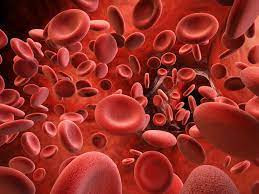Definisi
Hemofilia adalah kelainan darah yang biasanya diturunkan, di mana proses pembekuan darah tidak berjalan dengan baik. Pasiennya bisa mengalami perdarahan spontan setelah cedera atau operasi, atau perdarahan yang terjadi lebih lama. Hal yang ditakutkan adalah bila pasien mengalami cedera pada organ dan jaringan yang bisa membahayakan nyawa.
Darah mengandung banyak protein yang disebut faktor pembekuan dan berperan untuk menghentikan pendarahan. Faktor-faktor tersebut bekerja bersama keping darah (trombosit) ketika terjadi perdarahan untuk membentuk bekuan darah agar perdarahan bisa berhenti. Individu dengan hemofilia ditemukan memiliki kadar faktor pembekuan VIII atau faktor pembekuan IX yang rendah.
Tingkat keparahan hemofilia yang diderita seseorang ditentukan oleh banyaknya faktor pembekuan di dalam darah. Semakin rendah jumlah faktor pembekuan, semakin besar kemungkinan terjadinya pendarahan yang dapat menyebabkan masalah kesehatan yang serius.
Hemofilia terjadi pada sekitar 1 dari setiap 5000 kelahiran bayi laki-laki. Hemofilia dapat terjadi pada semua orang dengan semua kelompok ras dan etnis. Hemofilia hampir selalu merupakan penyakit genetik atau keturunan. Pada kasus yang sangat langka, seseorang dapat mengalami hemofilia di kemudian hari.
Penyebab
Jenis Hemofilia
Terdapat beberapa jenis hemofilia yang ditentukan berdasarkan kadar faktor pembekuan di darah, yaitu:
- Hemofilia A, jenis hemofilia terbanyak yang terjadi karena penurunan faktor pembekuan VIII. Sekitar 10 dari 100 ribu orang memiliki hemofilia A.
- Hemofilia B, tipe hemofilia yang disebabkan oleh penurunan faktor pembekuan IX. Sekitar 3 dari 100 ribu orang memiliki hemofilia B.
- Hemofilia C, kondisi yang terjadi karena kekurangan faktor XI. Jenis hemofilia ini adalah tipe yang paling langka, memengaruhi 1 dari 100 ribu orang.
Saat seseorang berdarah, tubuh akan membentuk bekuan darah di area yang luka untuk menghentikan perdarahan. Beberapa gen berperan dalam pembentukan faktor pembekuan. Pada hemofilia yang diturunkan, gen yang membawa instruksi untuk memproduksi faktor pembekuan normal mengalami mutasi atau perubahan.
Mutasi gen ini bisa mencegah faktor pembekuan untuk bekerja dengan baik atau hilang sepenuhnya. Gen yang bermutasi juga dapat memberikan instruksi yang menyebabkan pembentukan faktor pembekuan yang abnormal, atau penurunan jumlah faktor pembekuan yang dibutuhkan tubuh. Gen yang terlibat ini berada dalam kromosom X. Laki-laki memiliki satu kromosom X dan satu kromosom Y (XY), sedangkan perempuan memiliki dua kromosom X (XX). Kromosom X memiliki banyak gen yang tidak ada pada kromosom Y.
Proses Pewarisan Mutasi Genetik
Laki-laki hanya memiliki satu salinan dari sebagian besar gen yang ada di kromosom X. Karena itu, laki-laki bisa memiliki penyakit hemofilia karena menerima kromosom X yang mempunya mutasi genetik. Perempuan dengan satu kromosom X yang terganggu bisa menjadi “pembawa” sifat hemofilia untuk anaknya. Jika seorang wanita memiliki mutasi genetik pada kromosom X dan memiliki anak laki-laki, anak tersebut memiliki kemungkinan sebesar 50% untuk mewarisi kromosom X yang membawa gen faktor abnormal tersebut.
Sementara itu, Jika wanita yang sama memiliki anak perempuan, anak tersebut akan memiliki kemungkinan sebesar 50% untuk mewarisi kromosom dan gen faktor yang abnormal. Anak tersebut kemungkinan tidak akan memiliki gejala karena ia juga akan mewarisi kromosom X yang normal dari ayahnya. Kasus perempuan menderita hemofilia jauh lebih jarang, hal ini bisa terjadi bila satu kromosom X terpengaruh dan satu kromosom X lainnya hilang atau tidak aktif.
Faktor Risiko
Faktor risiko terbesar hemofilia adalah memiliki anggota keluarga yang juga mengalami kelainan ini. Laki-laki jauh lebih berisiko untuk mengalami hemofilia dibandingkan dengan perempuan.
Meskipun hemofilia diturunkan di keluarga, beberapa keluarga tidak memiliki riwayat anggota keluarga dengan hemofilia. Sekitar sepertiga dari kasus, bayi dengan hemofilia merupakan yang pertama kali di keluarga yang terkena mutasi gen faktor pembekuan.
Gejala
Tanda hemofilia yang sering ditemukan adalah perdarahan spontan atau perdarahan yang terjadi lebih lama dari normal. Perdarahan bisa terjadi pada:
- Sendi, sering terjadi pada sendi lutut, siku, dan pergelangan kaki. Hal ini dapat menyebabkan bengkak dan nyeri atau kekencangan pada sendi.
- Kulit, otot atau jaringan lunak, yang menyebabkan banyak memar tanpa sebab yang jelas.
- Mulut dan gusi, bisa terjadi setelah gigi tanggal.
- Kepala bayi setelah persalinan yang sulit.
Gejala perdarahan bisa terjadi setelah suatu luka atau cedera maupun prosedur medis. Anak laki-laki dengan hemofilia bisa mengalami perdarahan yang tidak kunjung berhenti setelah khitan. Vaksinasi atau suntikan pada pasien hemofilia juga bisa menyebabkan perdarahan. Mimisan juga dapat sering terjadi tanpa sebab yang jelas dan sulit untuk berhenti. Darah juga bisa ditemukan pada tinja atau urine.
Diagnosis
Umumnya selama pemeriksaan kehamilan, ibu akan diwawancara mengenai riwayat kehamilan, riwayat penyakit pada dirinya dan keluarga, serta pengobatan yang mungkin sedang dijalaninya. Bila ditemukan bahwa ada riwayat hemofilia pada keluarga, ketika ibu melahirkan bayi laki-laki, bayinya akan diperiksa segera setelah lahir.
Untuk mendiagnosis hemofiilia, dokter akan melakukan pemeriksaan darah tertentu untuk melihat bagaimana pembekuan darah pada anak. Di bawah ini adalah daftar pemeriksaan darah yang bisa dilakukan:
- Pemeriksaan darah lengkap untuk melihat kadar sel darah.
- Pemeriksaan masa protrombin plasma (PT) untuk melihat seberapa cepat darah membeku.
- Pemeriksaan Activated Partial Thromboplastin Time (APTT) untuk mengukur mengukur waktu darah mengalami pembekuan dalam hitungan detik.
Jika hasilnya darah tidak membeku dengan baik, maka dokter akan melakukan pemeriksaan faktor pembekuan, yang disebut juga dengan factor assays, untuk menentukan penyebab kelainan darah. Faktor VIII dan faktor IX biasanya ditemukan berkurang pada hemofilia. Kadar faktor pembekuan yang ada akan membantu dokter menentukan jenis hemofilia dan tingkat keparahannya.
Tata Laksana
Hemofilia diobati dengan menggantikan faktor pembekuan darah yang hilang sehingga darah dapat membeku dengan baik. Hal ini dilakukan dengan memberikan konsentrat faktor pembekuan melalui infus. Pasien bisa menerima konsentrat faktor pembekuan dari donasi plasma manusia atau buatan laboratorium.
Umumnya, hanya pasien hemofilia berat yang memerlukan pengobatan penggantian faktor pembekuan darah berulang. Selain itu, pasien juga bisa menerima obat antifibrinolitik, yaitu obat yang membantu agar bekuan darah tidak pecah.
Komplikasi
Komplikasi hemofilia umumnya timbul dari perdarahan spontan yang tidak segera diobati, dapat meliputi:
- Pendarahan pada tenggorokan atau leher bisa menyebabkan gangguan bernapas.
- Pendarahan pada anggota gerak dapat menekan sendi dan menyebabkan nyeri yang berat.
- Pendarahan pada kepala dan otak dapat menyebabkan gangguan jangka panjang, seperti kejang dan kelumpuhan.
- Kematian dapat terjadi jika pendarahan tidak dapat dihentikan atau jika terjadi pada organ penting seperti otak.
Pencegahan
Hemofilia tidak dapat dicegah. Jika Anda memiliki hemofilia dan ingin mempunyai anak, dokter akan merekomendasikan pemeriksaan genetik, sehingga Anda dan pasangan dapat mengetahui kemungkinan mewariskan gen hemofilia. Selain itu, pemeriksaan genetik pada anak juga bisa dilakukan untuk mengetahui apakah anak Anda dapat menurunkan hemofilia lagi di masa yang akan datang.
Kapan Harus ke Dokter?
Segera cari pertolongan medis jika Anda atau anak Anda mengalami perdarahan spontan yang tidak kunjung berhenti walaupun sudah dilakukan pengobatan pertama.
Mau tahu informasi seputar penyakit lainnya? Cek di sini, ya!
- dr Hanifa Rahma
What is hemophilia (2021) Centers for Disease Control and Prevention. Centers for Disease Control and Prevention. Available at: https://www.cdc.gov/ncbddd/hemophilia/facts.html (Accessed: March 16, 2023).
Hemophilia (2021) Mayo Clinic. Mayo Foundation for Medical Education and Research. Available at: https://www.mayoclinic.org/diseases-conditions/hemophilia/symptoms-causes/syc-20373327 (Accessed: March 16, 2023).
What is hemophilia? (2022) Cleveland Clinic. Available at: https://my.clevelandclinic.org/health/diseases/14083-hemophilia#prevention (Accessed: March 16, 2023).












